Sydney Metro opening attracts more than 100,000 passengers
It was a day decades in the making and one many sceptical Sydneysiders thought would never come. But Sunday’s boarding was believing as they came in their thousands to be first to ride the rails after the opening of the new $7.3 billion Sydney Metro.
It was a day decades in the making and one many sceptical Sydneysiders thought would never come.
But Sunday’s boarding was believing as they came in their thousands to be first to ride the rails after the opening of the shiny new $7.3 billion Sydney Metro.
The northwest transport link with 13 stations stretching from Rouse Hill to Chatswood features driverless trains and sliding screens to regulate passenger entry on platforms.
Thousands of excited commuters gathered at each of the new stops from as early as 6am, jam-packing carriages on the first services after Premier Gladys Berejiklian cut the ribbon at 9am at Tallawong station.

MORE NEWS
Why an alarming number of girls are quitting sport
Sydney suburb police warn is too dangerous to walk alone
Loss of vision no obstacle to Sydney chef’s dream
Sydney Metro said over 100,000 trips were logged in the first seven hours on the fare-free opening day, more than double the regular passenger load on the Epping-Chatswood line which is now part of the Metro.
But with the huge numbers came some teething problems with overcrowding and several delays caused by trains failing to align with the platform doors when stopping at stations including Macquarie Park.
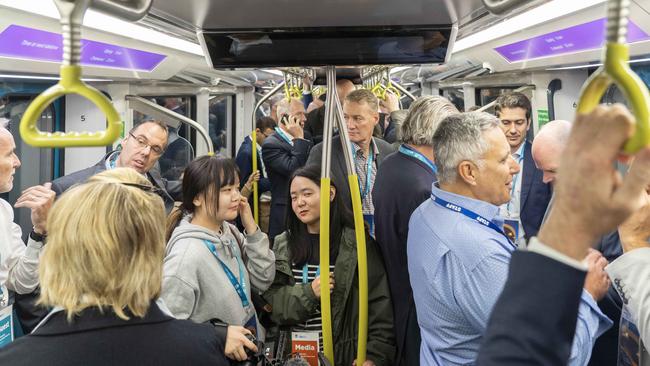
In response to criticism on social media, Sydney Metro tweeted: “We thank you for all your patience — there’s still things we know we have to improve on, we’ll keep working to get it better.”
Traveller Cora Zamora-Cardenas posted: “My husband and I had a great test ride today. We were not expecting it to be 100% perfect on day 1 … we just enjoyed the ride like we were holidaying in South Korea or Japan.”
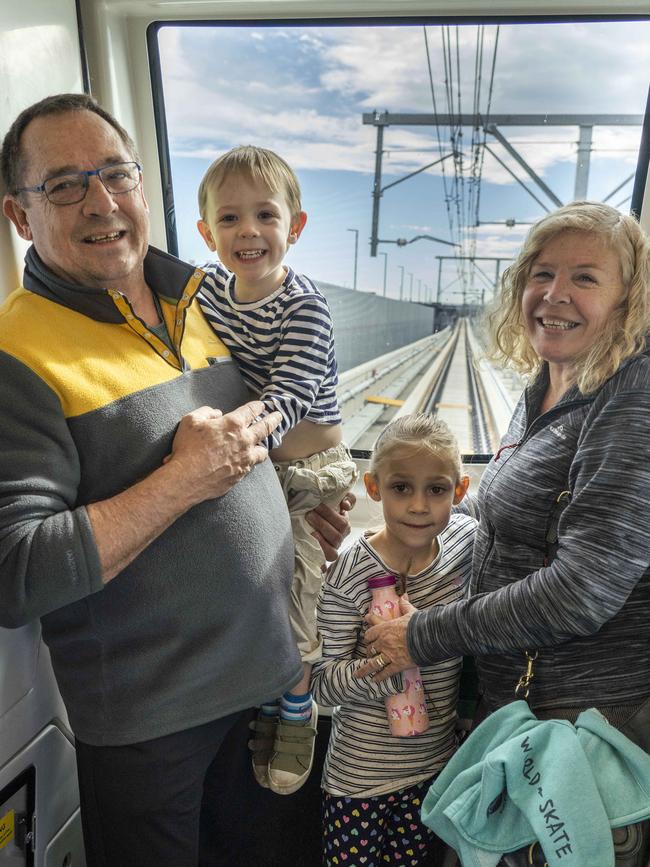
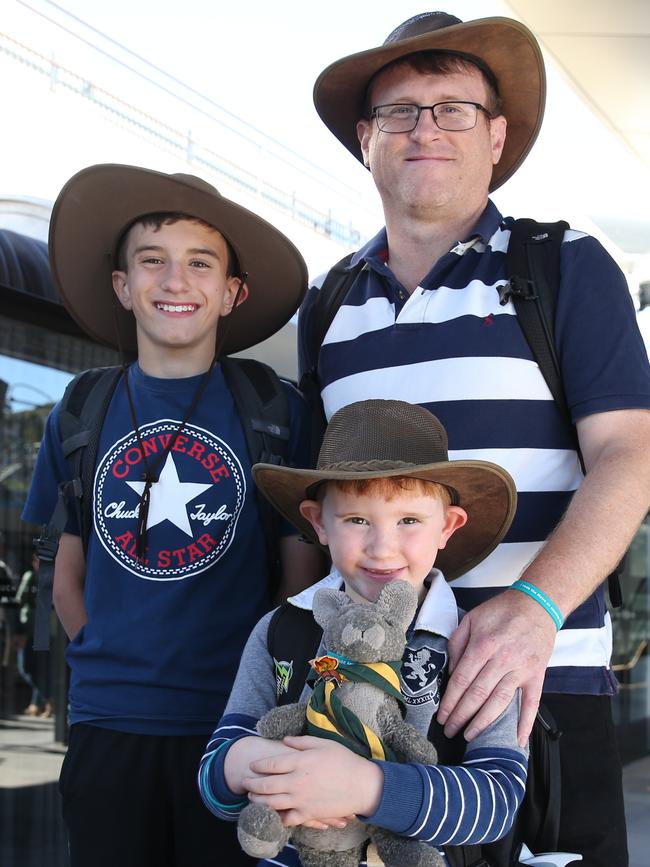
The Premier confessed she had a restless night’s sleep in anticipation of Sunday’s opening.
“I want to thank each and every one of the 22,000 workers who were digging away underground, unnoticed by those above ground, they have made today possible and I am incredibly proud of that,” Ms Berejiklian said.
“Today is a special day for NSW and a special day for Australia. This is the first Metro service ever on Australian shores. We are all incredibly proud of that.”

FAST FACTS
- The system can be expanded by adding both extra carriages and extra trains.
- The system can run a train every two minutes in each direction under the Sydney CBD.
- The trains will be stabled at the brand new Sydney Metro Trains Facility at Rouse Hill.
GAME CHANGER
Transport Minister Andrew Constance, who said the Metro would change Sydney, praised the Premier, who initiated the project as Transport Minister, for making it a reality.
“It was her vision that has led to us being able to turn up and go today,” he said. “This train is going to change lives forever and that is ultimately what today is about. This is the start of something very special for our state.”
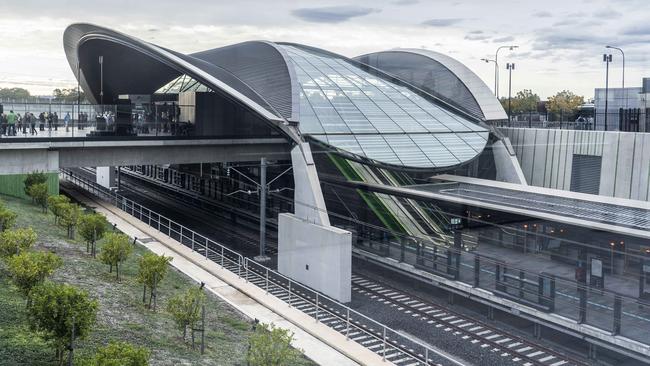
Castle Hill resident John Paterson and his grandson Asher O’Connor were the first official commuters to join local members, councillors and designers of the network at Rouse Hill’s Tallawong station.
“Ever since the project began I promised my grandchildren we would be on the first train,” Mr Paterson told The Daily Telegraph.
“We are very excited, I arrived here at 6am to be one of the first people on the train. I thought there would already be hundreds, if not thousands of people ready for the first train, but I was the first passenger here.”
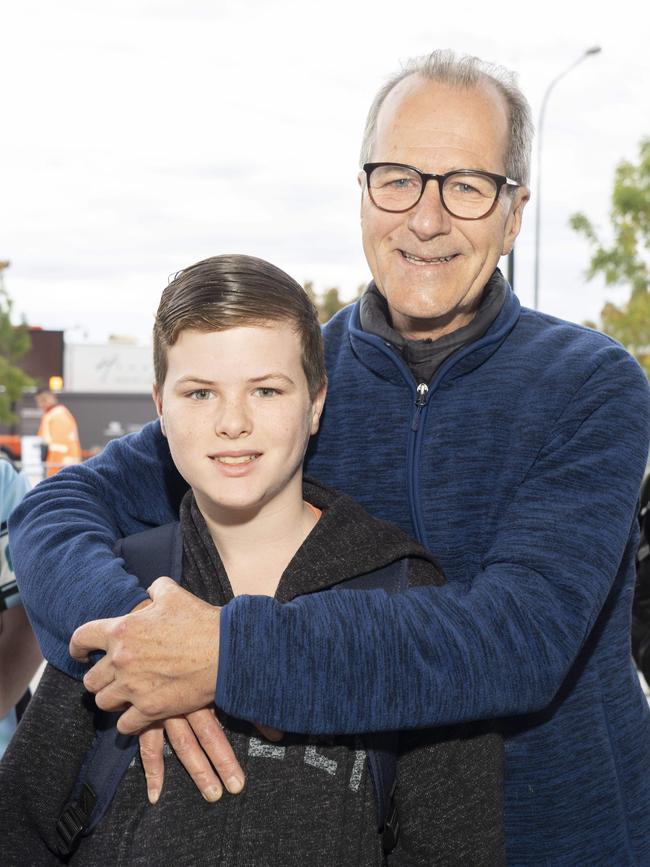
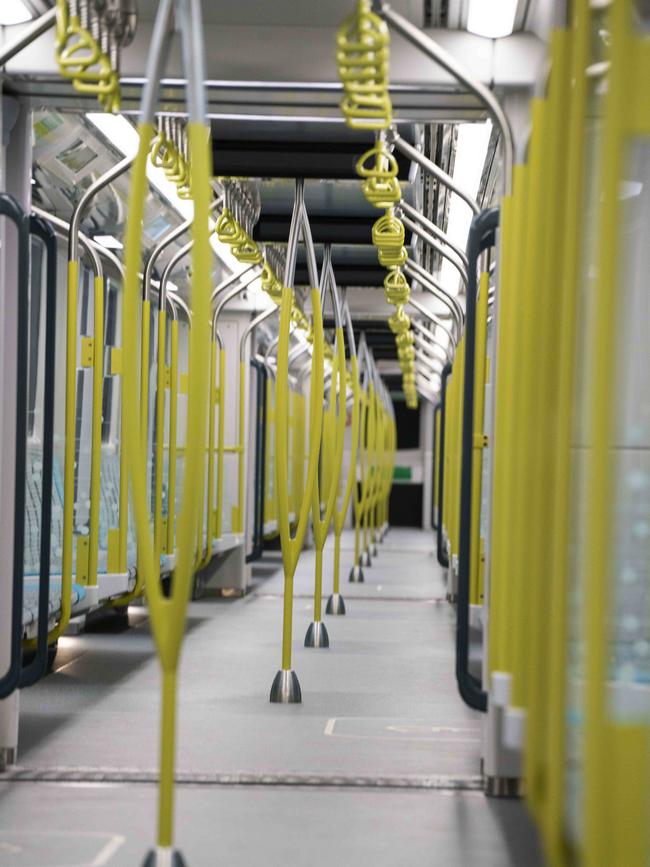
Mr Paterson, who has lived in The Hills for the past 50 years, said the Metro was the biggest investment in the area he had ever seen.
The Sydney Metro Northwest, which has undergone 400,000km of testing along the 36km route, will provide commuters with a turn-up-and-go service every four minutes in peak hour, and is expected to handle more than 30 million customer trips every year.
The new service aims to reduce car trips through northwest Sydney by 14 million each year, with 12,000 fewer cars expected to be on the road during morning peak hour. A station representative at Cherrybrook told the Telegraph that staff had been training for opening day full-time for the past five months.
FAST FACTS
- The state-of-art train has undergone 400,000km of testing.
- Sydney Metro will start with 22 trains and each will have 6 carriages.
- The platforms will be long enough for eight carriage trains like the rest of Sydney.
- All Sydney Metro stations are fully accessible — every station has lifts, level access between platforms and trains.
- Different rails are used in the Sydney Metro network, meaning Sydney Trains won’t be able to use them.
STATION STOPS
New stations along the network include Cherrybrook, Castle Hill, Hills Showground, Norwest, Bella Vista, Kellyville, Rouse Hill and Tallawong, while Epping, Macquarie University, Macquarie Park, North Ryde and Chatswood station were retrofitted to allow for Metro trains the access the Epping to Chatswood Tunnel.
The security doors on station platforms are designed to increase safety for commuters and reduce loading time at stations.

RELATED NEWS
How much the metro will cost you
Plea for on-demand buses to Kellyville and Rouse Hill stations
Western Sydney Aerotropolis link to The Hills and Schofields
Metro trains will spend just 35 seconds at each station for boarding.
The fully-automated trains are required to operate with a 98 per cent on-time running reliability, according to a government fact sheet. Railway enthusiasts Russell and Joan de la Motte, who have a long history working with trains across Sydney, were also on the first service.
“My son helped design all the stations and the tracks,” Mr de la Motte said. “We are here proud of him.”
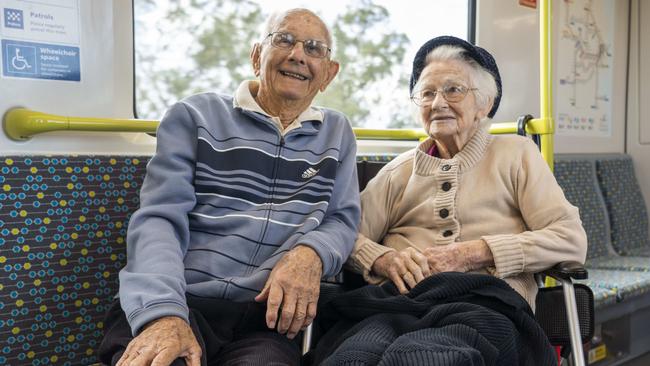
It took four boring machines 16 months to tunnel the 30km underground rail from Cherrybrook to Bella Vista, before the network transfers into a skytrain at Kellyville, Rouse Hill and Tallawong stations.
More than 20,000 people worked on the project for eight years and work is now underway to extend the line from Chatswood to Bankstown by 2024. Later, another Metro line will link greater Parramatta with the CBD.
FAST FACTS
- All stations have platform screen doors. They allow trains to get in and out of stations much faster.
- Train will be stopped at a station for about 35 seconds on average.
- Customer service assistants will be at every station.
- There’s 468 pairs of steel-framed doors — made from 8700sq m of glass.
- The total combined length of platform doors installed across Sydney Metro Northwest is nearly 44km.
- Driverless train technology has been around for 30 years.
IT’S EARLY DOORS BUT A NUMBER OF ISSUES
The excitement of taking a trip on a driverless train quickly evaporated for some commuters on Sunday when they were left stranded following a computer glitch.
Passengers were momentarily trapped at Macquarie Park when a Metro train door failed to align with the platform gates and had to be manually opened just after 1pm.
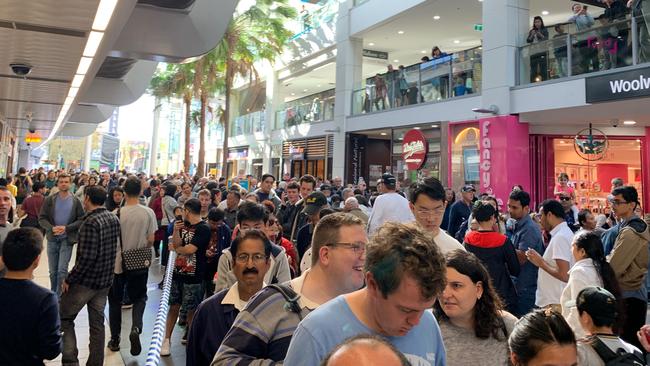
They eventually managed to exit the train and were collected by another service.
The incident caused delays of about 10 minutes and some crowding at stations such as Chatswood, where passengers shared photos of commuters in long lines.
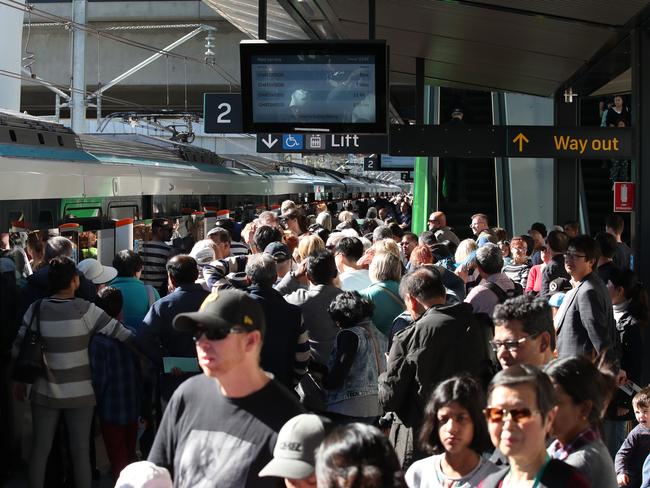
A Sydney Metro spokesman confirmed a Metro train stopped at Macquarie Park “due to an issue with a door not aligning correctly”.
“Passengers alighted and were collected by another train,” the spokesman said.
“The train has been taken to Chatswood and engineers are currently investigating. Train services resumed soon after.”
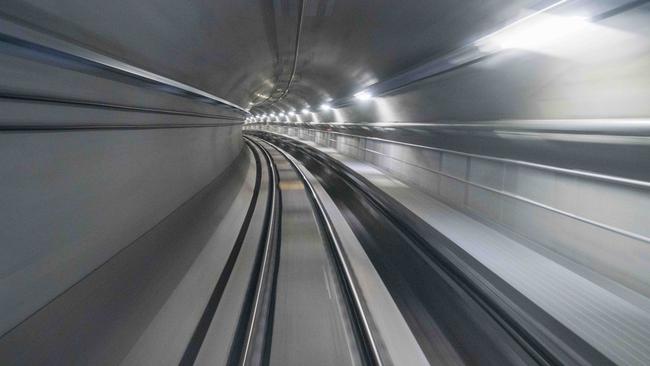
RELATED NEWS
Winners and losers in metro northwest parking
Multi-storey metro car park at Kellyville complete
Parking restriction installation around station streets
There were reports of trains overshooting stations and doors failing to open during testing as late as Thursday last week. However, a Transport for NSW spokesman denied that issues had occurred.
“Train door openings have been aligning with platform screen door openings within acceptable limits,” the spokesman said last week.

Passengers who vented their annoyance claimed some travellers were separated from their travelling companions during the chaos.
“Doors closed without warning … leaving my partner on the platform,” one woman claimed.
Another rider said: “Two (trains) in a row had door failures at Rouse Hill — very annoying and scary when the doors don’t open!”
NO EXCUSE FOR FRIENDS NOT TO VISIT RUTH NOW
She’s been waiting what feels like a lifetime and no one was more excited about the opening of the Sydney Metro Northwest than 94-year-old Ruth Karnowski
The Castle Hill resident is convinced that she holds the record for the longest wait for the Metro to arrive.
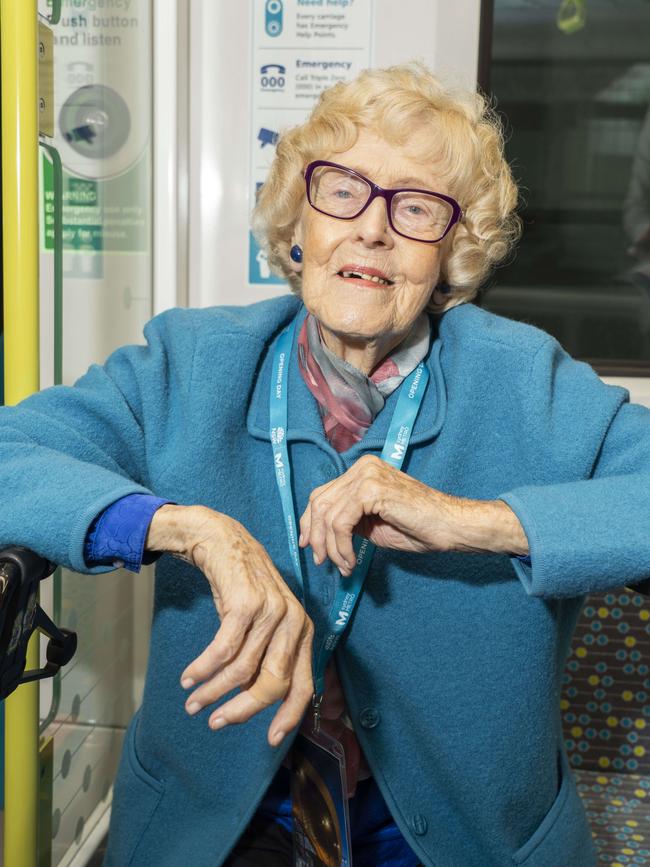
“I have been living for this moment for the past 30 years,” she told The Daily Telegraph at its launch.
“I told my children that I would live to see the opening of the Metro through The Hills decades ago, and I am thrilled to be here today on the first train. I told everyone I wasn’t dying until I see the opening of Cherrybrook station, and here I am today seeing that dream come true.”
Ms Karnowski, who lives at the Anglicare Retirement Village, said she has now been challenged by family and friends to reach 100 years of age — to see the completion of the entire Sydney Metro network through to Bankstown.
“I am taken up to Hornsby Hospital for three blood transfusions every three weeks,” Ms Karnowski said.
“It is a changing world, but I am happy to still be in it.”
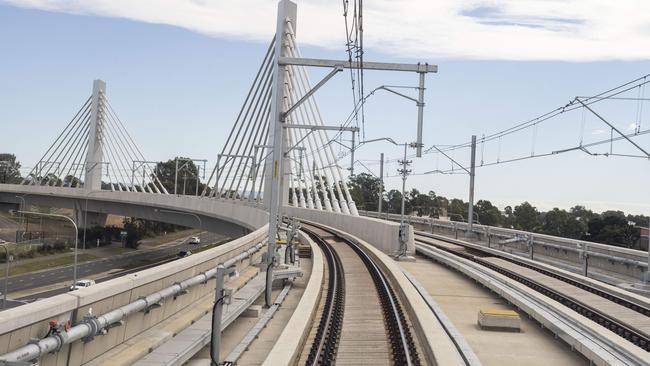
Friends of Ms Karnowski contacted the Transport Minister to ensure she received a golden ticket to ride the first train through The Hills on Sunday.
“This is the service the northwest has needed for a very long time,” she said.
“I have family and friends in other parts of Sydney that don’t have an excuse not to come visit me now.
“When you are my age and give up your car, these public transport services are all you rely on.”
WHERE ARE THE DRIVERS?
More than 40 million people use driverless train networks every day in cities including Paris, Singapore and Hong Kong.
“Each train has 38 security cameras inside including on the front and back of the trains; and inside the trains customers can see from one end of the train to the other, a significant security benefit,” the spokesman said.
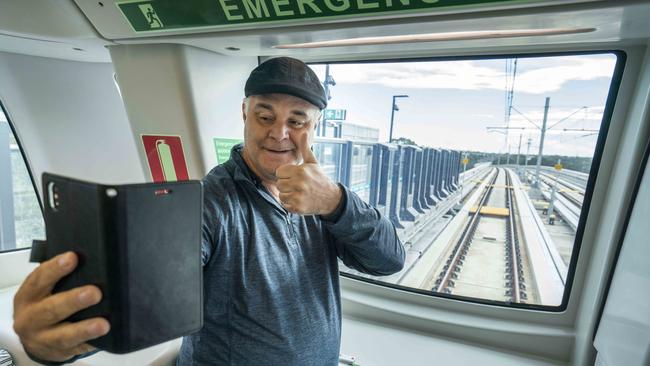
“State-of-the-art signalling and communications systems control the trains, the tunnels, the tracks, the platforms, the platform screen doors and the skytrain to ensure we deliver a safe and reliable journey to our customers.
“All these systems communicate with each other and are controlled by the expert train controllers back in the operations centre.”
Trial along the new network have included high speed tests on the skytrain, calibrating the platforms screen doors and loading a train with more than 100, one thousand litre tanks of water to simulate customer weight loads.


